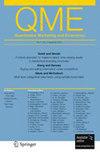Horizontal mergers and innovation in concentrated industries
IF 1.1
4区 管理学
Q3 BUSINESS
引用次数: 18
Abstract
It is an open question in antitrust economics whether allowing dominant firms to acquire smaller rivals is ultimately helpful or harmful to the long run rate of innovation and therefore long-term consumer welfare. I develop a framework to study this question in a dynamic oligopoly model where firms endogenously engage in investment, entry, exit and mergers. Firms produce vertically differentiated goods, compete by innovating on product quality, and can acquire rival firms to gain market power. In a benchmark model, mergers are modeled to be exclusively harmful to consumers in the short run by reducing competition and increasing prices. Despite this, under standard industry settings it is possible to show that the prospect of a buyout creates a powerful incentive for firms to preemptively enter the industry and invest to make themselves an attractive merger partner. The result is significantly higher rate of innovation with mergers than without and significantly higher long-run consumer welfare as well. Further results explore the circumstances under which this result is likely to hold. In order for the long run increase in innovation to outweigh the short run harm to consumers caused by mergers, entry costs must be low, entrants and incumbents must both have the ability to innovate rapidly, and the degree of horizontal product differentiation must be low. Alternatively, when dominant firms can directly incorporate the acquired firm’s innovation into their own product, mergers will typically benefit consumers in both the short run and long run.集中产业横向兼并创新
在反垄断经济学中,允许占主导地位的公司收购规模较小的竞争对手,最终对创新的长期速度、进而对消费者的长期福利是有益还是有害,这是一个悬而未决的问题。我开发了一个框架来研究这个问题,在动态寡头垄断模型中,企业内生地参与投资、进入、退出和合并。企业生产垂直差异化的产品,通过产品质量创新来竞争,并可以收购竞争对手以获得市场支配力。在基准模型中,合并被建模为在短期内只对消费者有害,因为它减少了竞争,提高了价格。尽管如此,在标准的行业环境下,有可能表明,收购的前景为公司先发制人地进入该行业并进行投资以使自己成为有吸引力的合并伙伴创造了强大的激励。结果是合并后的创新率明显高于没有合并时的创新率,同时也显著提高了长期消费者福利。进一步的结果探讨了这一结果可能成立的情况。为了使创新的长期增长超过合并对消费者造成的短期伤害,进入成本必须低,进入者和在位者都必须具有快速创新的能力,并且横向产品差异化程度必须低。或者,当占主导地位的公司可以直接将被收购公司的创新融入到自己的产品中时,合并通常会在短期和长期内使消费者受益。
本文章由计算机程序翻译,如有差异,请以英文原文为准。
求助全文
约1分钟内获得全文
求助全文
来源期刊

Qme-Quantitative Marketing and Economics
Multiple-
CiteScore
2.30
自引率
10.50%
发文量
13
期刊介绍:
Quantitative Marketing and Economics (QME) publishes research in the intersection of Marketing, Economics and Statistics. Our focus is on important applied problems of relevance to marketing using a quantitative approach. We define marketing broadly as the study of the interface between firms, competitors and consumers. This includes but is not limited to consumer preferences, consumer demand and decision-making, strategic interaction of firms, pricing, promotion, targeting, product design/positioning, and channel issues. We embrace a wide variety of research methods including applied economic theory, econometrics and statistical methods. Empirical research using primary, secondary or experimental data is also encouraged. Officially cited as: Quant Mark Econ
 求助内容:
求助内容: 应助结果提醒方式:
应助结果提醒方式:


